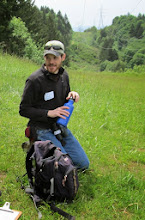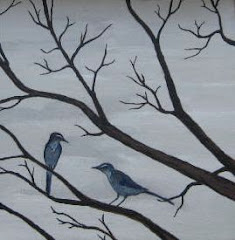This weekend, Sarah and I braved triple-digit temperatures to learn more about the places that produce our favorite foods and drink.

On Saturday, we attended a potluck picnic and tour at our CSA (community supported agriculture) farms. Steve and Mish, who are about our age, lease land for their program,
Abundant Harvest, at two farms a few miles north of our apartment. Both farm properties are owned by great families who joined us for the picnic and tour. The picnic was held at the Dos Sequoias Farm, and the namesake trees provided lifesaving shade as we ate. The CSA families brought amazing dishes and we even shared a table with fellow biologists.

After eating, Steve led us on a tour of the Dos Sequoias property. We saw the rows and rows of tomato plants and other crops.

We took a look inside a mid-century barn that has a hypnotic pattern of beams and sheet-metal.

We walked past a greenhouse that must have been unbearably hot inside. Thanks to this structure, however, we received plenty of greens during the chilly weeks of late-spring.

We then caravaned up the hill to New Earth Farm.

This was a beautiful piece of land with a nice patch of forest and views of Mount Hood and Mount Jefferson to the east.

To maximize the number of crops grown in a relatively small space, Steve plants crops like broccoli and parsley right next to each other. It amazes me that they can supply sixty families and several restaurants with so much produce from two little plots of land.

We also checked out New Earth's industrial scale compost operation. As a compost enthusiast, I was quite impressed.

Steve supplements the compost with bags of coffee bean husks provided by a local roaster.

The last stop on the tour was a look at New Earth's worm composting bin. It is fifteen feet long and four feet deep. Thousands of red wiggler worms lurked just below the surface and tiny mites crawled over the debris. I could have stared into the bin for hours!

Sunday was our wine club pickup day. We visited
Apolloni Vineyards, twenty miles west of Hillsboro, to get our wines and tour the vineyard.

They set up an outdoor tasting area among their small pear grove.

We were invited to return in the fall to pick as many as we like.

Alfredo the owner pulled us on a trailer with his tractor through the vineyards and orchards to teach us about the argicultural history and practices of the place.

The wine industry is very young in Oregon, the oldest vineyards were planted in the 1970s. Before then, much of the land was logged and planted with walnut and hazelnut orchards. The thin hillside soils turned out to be less than ideal for these crops, which are giving way to grapes such as pinot noir and pinot gris that do much better in the soil.

I am a big fan of wineries. Not only do they make a great product, but most are certified sustainable and they often have many acres of forested land on their properties. In addition, grapes require little to no irrigation and can be easily grown without pesticides or herbicides.
Now that we have gained an even greater appreciation for our food and wine growers, we look forward to enjoying their goods throughout the summer.


























































